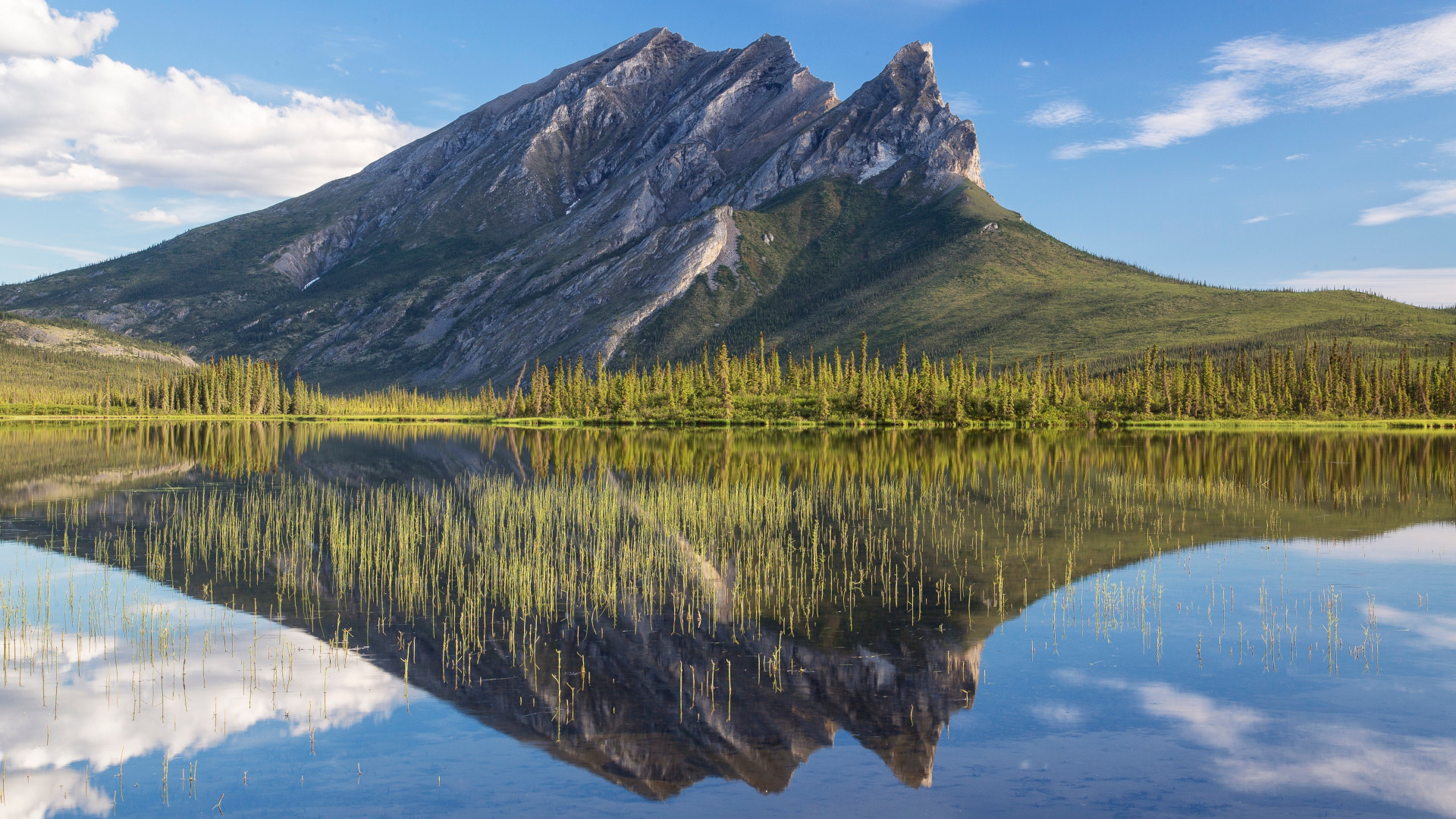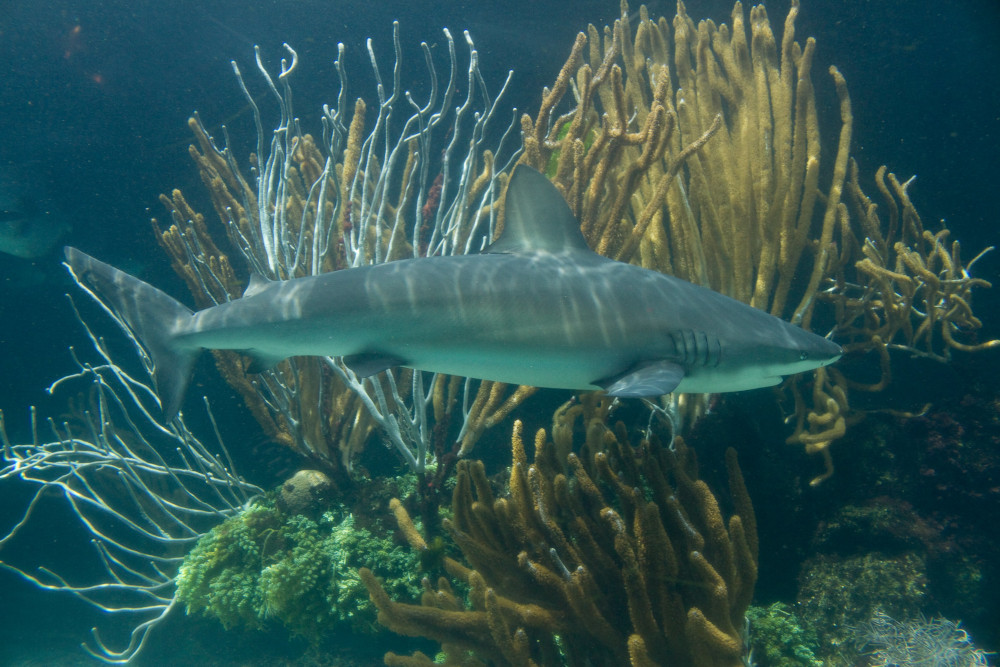
Each month scientific journals publish a whole bunch of recent papers about endangered species and wildlife conservation. It’s a firehose of knowledge in a world that feels more and more in flames.
That’s why I began scripting this column. “This Month in Conservation Science” is a chance to kind by a few of that essential analysis and filter it for an viewers who can put these scientific discoveries to good use.
Our first few columns checked out papers printed over particular four-week durations. This month, as all of us wrap up 2024, we requested researchers to ship us their greatest or favourite papers of the previous 12 months. We obtained submissions that provide hope, steering, evaluation, and perception into rising threats.
Stuart Pimm, president of Saving Nature, beneficial a paper he and his colleagues printed in Science Advances revealing shocking information for elephants. He wrote: “The general public might imagine that elephants within the African savannah are in freefall. The truth is, during the last quarter century, their numbers have held their very own throughout Southern Africa (mid-Tanzania southwards), an space that holds three-quarters of them. The paper reveals what methods led to this success and recommends that connecting now-isolated populations can be very important for future progress.”

Aerin Jacob, director of science and analysis at Nature Conservancy of Canada, despatched a coauthored paper from Conservation Biology about mountains — a habitat sort that deserves extra consideration. “Individuals typically suppose that mountain ecosystems are so rugged and inaccessible that they don’t want habitat safety, however that’s not true,” she wrote. “We studied six main mountain areas around the globe and located that on common half of them are as modified as the remainder of the world; two-thirds of them don’t (but) meet the 30×30 international safety goal; and present protected areas don’t embrace the overwhelming majority of mountain ecosystem sorts. Mountains are super-important for biodiversity, ecosystem operate, and the advantages folks get from nature. We ignore them at our peril.”
Talking of 30×30, marine knowledgeable Stacy Jupiter with the Wildlife Conservation Society beneficial a paper in Marine Coverage, cowritten by two different WCS specialists, that she tells us sought to “determine extremely productive marine areas around the globe to assist the world obtain the safety of at the least 30% of the planet by 2030. This evaluation provides to the present physique of information by exploring the notion of marine productiveness as an enabling situation that drives ecological integrity in marine ecosystems. It’s a critically necessary characteristic to tell and complement future conservation efforts.”

Sticking with the ocean, shark scientist David Shiffman (a frequent Revelator contributor) despatched a commentary he printed in Integrative & Comparative Biology about how misinformation shapes the general public’s perspective on shark conservation. “This invited commentary summarizes the final decade of my analysis into public misunderstanding of ocean conservation points,” he wrote. “In a profession sitting in rooms with international science and conservation consultants and a profession speaking to the public about the right way to save the ocean, I’ve observed one thing hanging: each teams discuss the identical points, however they discuss them very otherwise. This impressed a decade-long analysis challenge the place involved members of the general public find out about ocean conservation threats and their coverage options, and what sort of knowledge is unfold by these data pathways. It seems that almost each data pathway is flooded with misunderstandings if not straight-up pseudoscience, a giant drawback as we work to save lots of endangered species and key ecosystems.”
Sharks get a number of press, however many different species fly beneath the radar. Wildlife commerce researcher Lalita Gomez shared a Uncover Animals paper cowritten with frequent Revelator contributor Chris Shepherd a couple of cat-like mammal known as the binturong that faces an underappreciated menace. “This little creature is at present being traded beneath the radar in massive numbers for the pet commerce, which is ridiculous contemplating its weak standing,” she wrote. “The web commerce of stay animals can also be out of hand and with this paper we push for stronger regulation of social media platforms that perpetuate the commerce.”
Shepherd, in the meantime, was the senior creator of a paper within the European Journal of Wildlife Analysis that examined Canada’s position in worldwide wildlife commerce. “Wildlife commerce is embedded in Canada’s historical past, relationship again to the early fur merchants, evolving to incorporate a number of commodities such because the up to date fur trade and the thriving pet commerce of at present,” he wrote. “Contemplating latest reviews of animals legally and illegally imported into Canada and the potential threats of wildlife commerce studied elsewhere, wildlife commerce might pose dangers to Canada’s pure heritage, biodiversity, biosecurity, and animal welfare. Our overview underscores the necessity to improve tutorial information and coverage instruments to successfully determine and handle commerce points regarding Canadian and nonnative wildlife.”
Persevering with the theme of wildlife commerce, Neil D’Cruze shared a Journal of Environmental Administration paper from a number of authors at World Animal Safety and John Jay Faculty of Felony Justice that “highlights important gaps in international wildlife commerce legal guidelines regardless of a century of rising laws. Analyzing 11 biodiversity-rich nations, the analysis discovered that the International Biodiversity Index doesn’t correlate with the scope of wildlife commerce legal guidelines. Laws is erratically distributed throughout commerce levels, with animal welfare notably underrepresented, significantly in captive breeding and farming. Our research urges the alignment of nationwide and worldwide rules to handle essential gaps, shield biodiversity, and prioritise animal welfare, emphasising its significance for public well being and environmental sustainability.”
Transferring on to a unique subject, let’s discuss concerning the damaging methods folks transfer by the pure world. William Laurance, distinguished analysis professor at James Prepare dinner College, shared a Nature paper led by one among his Ph.D. college students about ghost roads — often-illegal roads that don’t exist on maps however pose a critical hazard to ecosystems. “Globally, ghost roads are one of the critical, understudied threats to ecosystems and biodiversity — particularly in poorer nations that harbor a lot of Earth’s biodiversity,” he wrote.
We additionally heard from Dr. Sara Cannon with the Centre for Indigenous Fisheries on the Institute for the Oceans and Fisheries, who was the lead creator of a paper in Sides that argued the open information motion is placing an excessive amount of stress on Indigenous folks to make their scientific information public. “This paper highlights why Indigenous information sovereignty is essential for addressing environmental challenges like local weather change and cumulative results on ecosystems, significantly salmon-bearing watersheds in British Columbia,” she writes. “It underscores the necessity for respectful collaborations between Indigenous knowledge-holders and exterior researchers, providing actionable steps to honor Indigenous information sovereignty and enhance information administration practices. By studying this paper, the general public can higher perceive how Indigenous information sovereignty helps ecosystem resilience and empowers Indigenous communities to take care of sovereignty over their territories and information.”
Samantha Strindberg of the WCS submitted two papers, each authored with expansive groups, that showcased the worth of huge, long-term conservation monitoring packages. The primary, printed in Oryx, assessed the inhabitants measurement of the Mongolian gazelle. “The Japanese Steppe of Mongolia harbors the most important remaining temperate grassland on the planet and is house to tens of millions of Mongolian gazelles,” she wrote. “That is the primary complete evaluation of this species that roams over 750,000 sq. kilometers, predominantly (91%) within the Mongolian open plains, and likewise Russia and China. It highlights the significance of complete monitoring surveys and the worth of cross-border collaboration to offer necessary data for conservation of this species within the long-term.”
The second, printed in Primates, examined nice ape surveys: “The Republic of Congo expanded the Nouabalé-Ndoki Nationwide Park to incorporate the gorilla-rich, beforehand unlogged forest of the Djéké Triangle. These survey outcomes for western lowland gorilla and central chimpanzee are a part of a 25-year historical past of worldwide necessary scientific analysis on the ecology and habits of western lowland gorillas. Empirical proof of the environmental worth and strategic conservation significance supported the inclusion of the Djéké Triangle into the NNNP with long-term monitoring outcomes additionally informing best-practice requirements and ape tourism certification.”
Lastly, this month, we heard from Liber Ero Postdoctoral Fellow Jayme Lewthwaite, who beneficial a paper she didn’t work on as among the best she’s seen in 2024. Revealed in Nature Sustainability, lead creator Laura Melissa Guzman and colleagues examined the results of pesticides on wild bee distributions in the US. “This paper is so necessary as a result of it’s the primary nationwide evaluation of how pesticide use is affecting native bees throughout their ranges,” Lewthwaite wrote. “Whereas general pesticide use has plateaued within the U.S., Guzman et al. present that the novel pesticides which might be more and more being favored (resembling neonicotinoids) are extraordinarily lethal to native bugs, maybe greater than any of their predecessors. Whereas this was suspected and proven by a couple of research within the UK (the place they have been subsequently banned), that is the primary research to take action within the U.S. on such a big taxonomic and spatial scale. We must always all be fearful concerning the decline of native bees as a result of they’re by far the simplest pollinators out of any group, and this has necessary meals safety implications.”
Beforehand Revealed on The Revelator
Featured picture
U.S. Fish and Wildlife Service Headquarters on Flickr Beneath CC License
The put up This Yr in Conservation Science: Elephants, Sharks, Mountains, Bees, and Extra appeared first on The Good Males Venture.
